($30, Taub Family Selections):  Made using the Metodo Classico (classic method, a.k.a. Champagne method), this Prosecco is, like few — if any — others. With the classic method, the secondary fermentation occurs in the bottle, a labor-intensive and expensive proposition. But the results are worth it because the wine develops additional complexity from the yeast and aging. … Read more
Made using the Metodo Classico (classic method, a.k.a. Champagne method), this Prosecco is, like few — if any — others. With the classic method, the secondary fermentation occurs in the bottle, a labor-intensive and expensive proposition. But the results are worth it because the wine develops additional complexity from the yeast and aging. … Read more
Category Archives: Italy
Vietti, Roero Arneis DOCG (Piedmont, Italy) 2021
($24, Dalla Terra Winery Direct): 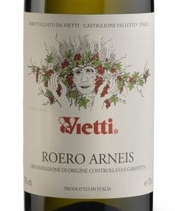 Much of the acclaim for the wines of Piedmont goes to their reds, which certainly deserve it. But let’s not forget about the whites from Roero made from the Arneis grape. Arneis, in the local dialect means “little rascal,” because it is difficult to grow. … Read more
Much of the acclaim for the wines of Piedmont goes to their reds, which certainly deserve it. But let’s not forget about the whites from Roero made from the Arneis grape. Arneis, in the local dialect means “little rascal,” because it is difficult to grow. … Read more
Cordero di Montezemolo, Langhe Arnesi DOC (Piedmont, Italy) 2020
($21):  Though Arneis from the DOC Langhe may be less prestigious than Arneis from the DOCG Roero, the wines can be very good, and well-priced, especially from a top producer, such as Cordero di Montezemolo. Take this one, for example. Refreshing and cutting, this chiseled Arneis has good depth and an appealing saline-like minerality. … Read more
Though Arneis from the DOC Langhe may be less prestigious than Arneis from the DOCG Roero, the wines can be very good, and well-priced, especially from a top producer, such as Cordero di Montezemolo. Take this one, for example. Refreshing and cutting, this chiseled Arneis has good depth and an appealing saline-like minerality. … Read more
Tenuta Carretta, Barbaresco Riserva (Piedmont, Italy) Cascina Bordino 2016
($55):  Like Garassino, the Cascina Bordino vineyard is in the Treiso portion of the Barbaresco DOCG. As much as I liked Carretta’s 2017 Garassino, the stature of the vintage stands out in this 2016 Riserva. It delivers richness and depth — more power — without losing any elegance. … Read more
Like Garassino, the Cascina Bordino vineyard is in the Treiso portion of the Barbaresco DOCG. As much as I liked Carretta’s 2017 Garassino, the stature of the vintage stands out in this 2016 Riserva. It delivers richness and depth — more power — without losing any elegance. … Read more
Tenuta Carretta, Barbaresco (Piedmont, Italy) Garassino 2017
($35):  The 2017 vintage in Piedmont has the potential to be overlooked because of all the justifiable praise for the 2016 vintage there. Don’t overlook this engaging Barbaresco from the Garassino vineyard located in Treiso. Wines from vineyards in this northwestern part of Treiso tend toward elegance rather than power. … Read more
The 2017 vintage in Piedmont has the potential to be overlooked because of all the justifiable praise for the 2016 vintage there. Don’t overlook this engaging Barbaresco from the Garassino vineyard located in Treiso. Wines from vineyards in this northwestern part of Treiso tend toward elegance rather than power. … Read more
Tenuta Carretta, Barolo (Piedmont, Italy) “Cannubi” 2016
($110, Consortium Wine and Spirits Imports):  This wine is the vinous equivalent of a hat trick in hockey, which is three goals by the same player in a period. In this case, it’s three greats — great producer, great vintage, great site. … Read more
This wine is the vinous equivalent of a hat trick in hockey, which is three goals by the same player in a period. In this case, it’s three greats — great producer, great vintage, great site. … Read more
Tenuta Carretta, Roero Riserva DOCG (Piedmont, Italy) “Bric Paradiso” 2017
($30, Consortium Wine and Spirits Imports): 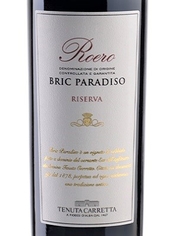 Like Langhe Nebbiolo appellation, Roero is also over-shadowed by its more famous neighbors, Barolo and Barbaresco. This is a DOCG that deserves more recognition because of the high quality/price ration. Carretta’s 2017 is a good example. … Read more
Like Langhe Nebbiolo appellation, Roero is also over-shadowed by its more famous neighbors, Barolo and Barbaresco. This is a DOCG that deserves more recognition because of the high quality/price ration. Carretta’s 2017 is a good example. … Read more
Tenuta Carretta, Langhe Nebbiolo DOC (Piedmont, Italy) “Podio” 2020
($21, Consortium Wine and Spirits Imports):  Wines carrying the Langhe Nebbiolo appellation, especially from a top producer like Carretta, can be a great way for consumers to be introduced to the charms of the more prestigious Nebbiolo-based wines, such as Barolo and Barbaresco, without breaking the bank. … Read more
Wines carrying the Langhe Nebbiolo appellation, especially from a top producer like Carretta, can be a great way for consumers to be introduced to the charms of the more prestigious Nebbiolo-based wines, such as Barolo and Barbaresco, without breaking the bank. … Read more
Luretta, Colli Piacentini DOC (Emilia Romagna, Italy) Malvasia Aromatica di Candia “Boccadirosa” 2020
($30, USA Wine Imports): 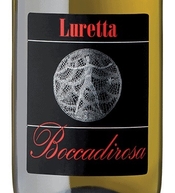 In addition to the innumerable DOCs, the Italians use a mind-boggling number of grapes for their wines, which is another reason the wines from that country are so exciting to explore. Malvasia Aromatica di Candia had me running to Jancis Robinson’s Wine Grapes, which informed me that although Candia is an old name for Crete, there is no genetic evidence that is originated on that Greek Island. … Read more
In addition to the innumerable DOCs, the Italians use a mind-boggling number of grapes for their wines, which is another reason the wines from that country are so exciting to explore. Malvasia Aromatica di Candia had me running to Jancis Robinson’s Wine Grapes, which informed me that although Candia is an old name for Crete, there is no genetic evidence that is originated on that Greek Island. … Read more
Luretta, Gutturnio Superiore DOC (Emilia Romagna, Italy) 2018
($25, USA Wine Imports):  One of the exciting and bewildering things about Italian wines is the ever-increasing number of DOCs that sprout like mushrooms after a rain. Gutturnio Superiore is a new one to me. Formerly a part of the Colli Piacentini, another DOC I’ve heard of but could not find on a map, Gutturnio is the northwest part of Emilia Romagna, bordering both Piedmont and Lombardy, which may explain the grapes, Barbera and Croatina, used in this wine. … Read more
One of the exciting and bewildering things about Italian wines is the ever-increasing number of DOCs that sprout like mushrooms after a rain. Gutturnio Superiore is a new one to me. Formerly a part of the Colli Piacentini, another DOC I’ve heard of but could not find on a map, Gutturnio is the northwest part of Emilia Romagna, bordering both Piedmont and Lombardy, which may explain the grapes, Barbera and Croatina, used in this wine. … Read more
Petilia, Greco di Tufo DOCG (Campania, Italy) 2019
($22, Dark Star Imports):  Greco di Tufo is one of Italy’s great white wines and justifiability deserves its DOCG designation. The volcanic Campanian soil and the region’s climate allow the grape to shine. The emphasis of Petilia’s 2019 is on a lava-like minerality rather than fruitiness. … Read more
Greco di Tufo is one of Italy’s great white wines and justifiability deserves its DOCG designation. The volcanic Campanian soil and the region’s climate allow the grape to shine. The emphasis of Petilia’s 2019 is on a lava-like minerality rather than fruitiness. … Read more
Anselmet, Vallée d’Aoste DOC (Italy) Petite Arvine 2020
($40): 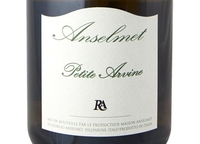 Petite Arvine, commonly known just as Arvine, is native and almost exclusive to the Valais in Switzerland, but there are a few acres of it planted in the Aosta Valley. This one has a Viognier-like character, fruity and floral, yet not sweet. … Read more
Petite Arvine, commonly known just as Arvine, is native and almost exclusive to the Valais in Switzerland, but there are a few acres of it planted in the Aosta Valley. This one has a Viognier-like character, fruity and floral, yet not sweet. … Read more
Anselmet, Vallée d’Aoste DOC (Italy) Chardonnay “Mains et Coeur” 2019
($64):  The team at Anselmet clearly thinks this is an important wine — heavy bottle, heavy wax seal that makes uncorking difficult. But this Chardonnay is worth the effort. It is a remarkably well-balanced of delicate fruitiness and minerality. There is an uplifting saline-like savoriness in the finish. … Read more
The team at Anselmet clearly thinks this is an important wine — heavy bottle, heavy wax seal that makes uncorking difficult. But this Chardonnay is worth the effort. It is a remarkably well-balanced of delicate fruitiness and minerality. There is an uplifting saline-like savoriness in the finish. … Read more
Cecchi, Chianti Classico Riserva DOCG (Tuscany, Italy) “Riserva di Famiglia” 2015
($32, Terlato Wines International):  Cecchi’s Chianti Classico Riserva, unsurprisingly, is bigger and more powerful than their 2019 regular (annata) bottling. Weighing in at 14 percent stated alcohol, it has more power, yet retains elegance. The wood is still showing at this stage, but from my experience with their wines, it will become better integrated after another year or so in the bottle. … Read more
Cecchi’s Chianti Classico Riserva, unsurprisingly, is bigger and more powerful than their 2019 regular (annata) bottling. Weighing in at 14 percent stated alcohol, it has more power, yet retains elegance. The wood is still showing at this stage, but from my experience with their wines, it will become better integrated after another year or so in the bottle. … Read more
Cecchi, Chianti Classico DOCG (Tuscany, Italy) “Storia di Famiglia” 2019
($27, Terlato Wines International):  This Chianti Classico shows why Cecchi is one of Tuscany’s top producers. Based in Castellina in Chianti, the heart of Chianti Classico region, Cecchi has fashioned a lovely, mid-weight wine that combines savory elements — earthy notes — with cherry-scented flavors. … Read more
This Chianti Classico shows why Cecchi is one of Tuscany’s top producers. Based in Castellina in Chianti, the heart of Chianti Classico region, Cecchi has fashioned a lovely, mid-weight wine that combines savory elements — earthy notes — with cherry-scented flavors. … Read more
Donnachiara, Taurasi Riserva DOCG (Campania, Italy) 2017
($50):  Taurasi remains an underappreciated DOCG. Those unfamiliar with the wines from the volcanic soil in this part of Campania need to discover them. Donnachiara’s is a good place to start. Made entirely from the Aglianico grape, it has a tarry power that belies its modest, 13.5 percent stated, alcohol. … Read more
Taurasi remains an underappreciated DOCG. Those unfamiliar with the wines from the volcanic soil in this part of Campania need to discover them. Donnachiara’s is a good place to start. Made entirely from the Aglianico grape, it has a tarry power that belies its modest, 13.5 percent stated, alcohol. … Read more
San Felice, Chianti Classico DOCG Gran Selezione (Tuscany, Italy) “Poggio Rosso” 2016
($70, Vision Wine and Spirits):  Gran Selezione is a relatively new, not even a decade old, category of Chianti Classico. It sits at the pinnacle of the region’s quality pyramid, which now has the three levels: annata or regular bottling, Riserva, and finally Gran Selezione. … Read more
Gran Selezione is a relatively new, not even a decade old, category of Chianti Classico. It sits at the pinnacle of the region’s quality pyramid, which now has the three levels: annata or regular bottling, Riserva, and finally Gran Selezione. … Read more
Campogiovanni, Brunello di Montalcino DOCG (Tuscany, Italy) 2016
($63, Vision Wine and Spirits):  San Felice, a top Chianti Classico producer, also owns the Campogiovanni estate in Montalcino. They produced a stunning Brunello in 2016. The San Felice’s wines always express power, but they manage to modulate it so that the terroir is not overwhelmed. … Read more
San Felice, a top Chianti Classico producer, also owns the Campogiovanni estate in Montalcino. They produced a stunning Brunello in 2016. The San Felice’s wines always express power, but they manage to modulate it so that the terroir is not overwhelmed. … Read more
Zorutti, Collio DOP (Friuli Venezia Giulia, Italy) Pinot Grigio 2020
($15):  Italy produces roughly 40 percent of all Pinot Grigio even though that grape is not native variety to that country, according to Daniele Cernilli, one of the world’s experts on Italian wines. As it has become an extremely popular wine in the U.S.,… Read more
Italy produces roughly 40 percent of all Pinot Grigio even though that grape is not native variety to that country, according to Daniele Cernilli, one of the world’s experts on Italian wines. As it has become an extremely popular wine in the U.S.,… Read more
Cobue, Lugana DOC (Lombardy, Italy) “Monte Lupo” 2020
($12):  Lugana, a DOC on the southern shore of Lake Garda in Northern Italy, is a name to remember for white wines. The primary grape is Turbiana, also known as Trebbiano di Lugana. Locals prefer Turbiana, the historical name, to dissociate it from the mostly down-market family of varieties and grape strains associated with the Trebbiano name. … Read more
Lugana, a DOC on the southern shore of Lake Garda in Northern Italy, is a name to remember for white wines. The primary grape is Turbiana, also known as Trebbiano di Lugana. Locals prefer Turbiana, the historical name, to dissociate it from the mostly down-market family of varieties and grape strains associated with the Trebbiano name. … Read more
Antico Monastero, Moscato d’Asti DOCG (Piedmont, Italy) 2021
($15): 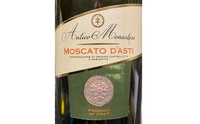 This wine is bottled summertime. Spritz balances the healthy amount of residual sugar so it’s not cloying, just refreshing. And all of 5.5 percent stated alcohol means you can drink it all afternoon by the pool this summer. Or use it as a zippy and sweet aperitivo. … Read more
This wine is bottled summertime. Spritz balances the healthy amount of residual sugar so it’s not cloying, just refreshing. And all of 5.5 percent stated alcohol means you can drink it all afternoon by the pool this summer. Or use it as a zippy and sweet aperitivo. … Read more
Marchesi di Barolo, Langhe Nebbiolo (Piedmont, Italy) “Sbirolo” 2020
($26, Frederick Wildman and Sons Ltd.):  The name of this wine, Sbirolo, which means someone with an extroverted personality in the local dialect, describes the wine perfectly. A more succinct translation is “rascal.” This Sbirolo is expressive and in-your-face in a very nice way. … Read more
The name of this wine, Sbirolo, which means someone with an extroverted personality in the local dialect, describes the wine perfectly. A more succinct translation is “rascal.” This Sbirolo is expressive and in-your-face in a very nice way. … Read more
Mauro Veglio, Barolo (Piedmont, Italy) 2018
($45):  This family-owned firm makes a range of Barolo from four of the important vineyards or cru in the DOCG and this one, made from grapes grown in La Morra and Monforte d’Alba where they also have vineyards. It’s a masterful blend that shows the value of the tradition of blending from throughout the Barolo DOCG versus the more recent trend towards single vineyard bottling. … Read more
This family-owned firm makes a range of Barolo from four of the important vineyards or cru in the DOCG and this one, made from grapes grown in La Morra and Monforte d’Alba where they also have vineyards. It’s a masterful blend that shows the value of the tradition of blending from throughout the Barolo DOCG versus the more recent trend towards single vineyard bottling. … Read more
Marchesi di Barolo, Barolo (Piedmont, Italy) “Barolo del Comune di Barolo” 2016
($63, Frederick Wildman and Sons Ltd.):  The combination of an outstanding vintage (2016) and an outstanding producer (Marchesi di Barolo) equals an outstanding wine. The wine is a blend from their vineyards within in the municipality of Barolo, one of the 11 villages that comprise the DOCG and the one from which the DOCG takes its name. … Read more
The combination of an outstanding vintage (2016) and an outstanding producer (Marchesi di Barolo) equals an outstanding wine. The wine is a blend from their vineyards within in the municipality of Barolo, one of the 11 villages that comprise the DOCG and the one from which the DOCG takes its name. … Read more
La Casaccia, Barbera del Monferrato DOC (Piedmont, Italy) “Giuanin” 2019
($25):  La Casaccia, a family-run winery with 20 acres of vines, has always been ahead of the curve. They started farming organically two decades ago, well before it became popular. For those unfamiliar with Barbera, and even for those who know that grape well, this is a beautiful example. … Read more
La Casaccia, a family-run winery with 20 acres of vines, has always been ahead of the curve. They started farming organically two decades ago, well before it became popular. For those unfamiliar with Barbera, and even for those who know that grape well, this is a beautiful example. … Read more
Marchesi di Barolo, Barbera d’Asti (Piedmont, Italy) “Peiragal” 2018
($27, Frederick Wildman and Sons Ltd.):  In 1980, Ernesto, the patriarch of the family, either foolishly or prophetically planted Barbera in the Paiagallo vineyard, one of Barolo’s top vineyards for Nebbiolo. Valentina, his daughter, recounted that her father replaced the more valuable Nebbiolo vines with Barbera, even though he realized it was not in his economic interest. … Read more
In 1980, Ernesto, the patriarch of the family, either foolishly or prophetically planted Barbera in the Paiagallo vineyard, one of Barolo’s top vineyards for Nebbiolo. Valentina, his daughter, recounted that her father replaced the more valuable Nebbiolo vines with Barbera, even though he realized it was not in his economic interest. … Read more
The 2017 Brunellos: Like Wagner’s Music-Not as Bad as It Sounds
Maison Anselmet, Vallée d’Aoste DOP (Italy) Pinot Noir “Semel Pater” 2019
($53):  France meets Italy. Yes, Italy’s Aosta Valley borders France, but it is still a part of Italy. So, why is the appellation for this wine and the name of the producer in French? Shouldn’t it be DOC Valle d’Aosta and Tenuta instead of Maison? … Read more
France meets Italy. Yes, Italy’s Aosta Valley borders France, but it is still a part of Italy. So, why is the appellation for this wine and the name of the producer in French? Shouldn’t it be DOC Valle d’Aosta and Tenuta instead of Maison? … Read more
Genagricola, Friuli DOC (Venezia Giulia, Italy) Pinot Grigio “Poggiobello” 2020
($25, Montcalm Wine Importers):  Anyone who wants to know why Pinot Grigio became so popular should taste this wine. And then lament that more PG, as it is sometimes known, doesn’t deliver this much enjoyment. Its fresh and white flower aromas are immediately captivating. … Read more
Anyone who wants to know why Pinot Grigio became so popular should taste this wine. And then lament that more PG, as it is sometimes known, doesn’t deliver this much enjoyment. Its fresh and white flower aromas are immediately captivating. … Read more
Livon, Friuli Colli Orientali (Venezia Giulia, Italy) Pinot Grigio 2020
($16, Angelini Wine Company):  Though an entirely different style of Pinot Grigio from the Poggiobello (also reviewed this week), Livon’s is equally enjoyable. It transmits the barest hint of copper color that comes from normal coloration of the Pinot Grigio grape when there has been some skin contact during fermentation. … Read more
Though an entirely different style of Pinot Grigio from the Poggiobello (also reviewed this week), Livon’s is equally enjoyable. It transmits the barest hint of copper color that comes from normal coloration of the Pinot Grigio grape when there has been some skin contact during fermentation. … Read more
Lunae, Colli di Luni DOC (Liguria/Tuscany, Italy) Vermentino “Black Label” 2020
($40, Montcalm Wine Importers): 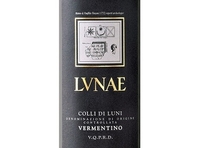 There us Vermentino, then there is Lunae Black Label Vermentino. I’ve always loved this wine and the 2020 is no exception. It has everything: richness, a saline-infused minerality, and extraordinary freshness. It has a seemingly never ending finish. … Read more
There us Vermentino, then there is Lunae Black Label Vermentino. I’ve always loved this wine and the 2020 is no exception. It has everything: richness, a saline-infused minerality, and extraordinary freshness. It has a seemingly never ending finish. … Read more
Ferrari, TrentoDOC (Trentino, Italy) “Giulio Ferrari Riserva del Fondatore” 2008
($143, Taub Family Selections):  There is no better Italian sparkling wine producer than Ferrari. Their entire line-up is Metodo Classico, that is, made with a secondary fermentation performed in the bottle, similar to the process in Champagne. Everything from their non-vintage blends to their mono-variety Chardonnays (also known as blanc de blancs) is consistently excellent and puts a smile on your face. … Read more
There is no better Italian sparkling wine producer than Ferrari. Their entire line-up is Metodo Classico, that is, made with a secondary fermentation performed in the bottle, similar to the process in Champagne. Everything from their non-vintage blends to their mono-variety Chardonnays (also known as blanc de blancs) is consistently excellent and puts a smile on your face. … Read more
2016 Brunello di Montalcino: Don’t Miss Them
The great success of the 2016 vintage throughout Tuscany suggested that the just-released 2016 Brunello would be memorable. Is it ever! To my mind, it is, by far, the best vintage since 2010. I certainly prefer the 2016s in general to the more powerful and overdone Brunello from the much-hyped 2015 vintage. … Read more
Vietti, Langhe Nebbiolo DOC (Piedmont, Italy) “Perbacco” 2017
($31, Dalla Terra Winery Direct):  Vietti is one of a handful of producers whose wines never fail to impress. I doubt that they have ever made an undistinguished wine. You can safely buy anything Vietti makes. This Langhe Nebbiolo displays understated elegance and wonderful austerity. … Read more
Vietti is one of a handful of producers whose wines never fail to impress. I doubt that they have ever made an undistinguished wine. You can safely buy anything Vietti makes. This Langhe Nebbiolo displays understated elegance and wonderful austerity. … Read more
Tenuta Carretta, Roero Arneis Riserva DOCG (Piedmont, Italy) “Canorei” 2017
($27):  Canorei is Carretta’s oldest vineyard. They vinify and then age their best grapes from this vineyard in oak barrels. The oak influence is still apparent in this 2017, but the alluring stone fruit aroma of Arneis still comes through. The oak, and perhaps the age of the vines, add opulence and weight that some consumers will find appealing. … Read more
Canorei is Carretta’s oldest vineyard. They vinify and then age their best grapes from this vineyard in oak barrels. The oak influence is still apparent in this 2017, but the alluring stone fruit aroma of Arneis still comes through. The oak, and perhaps the age of the vines, add opulence and weight that some consumers will find appealing. … Read more
Tenuta Carretta, Roero Arneis DOCG (Piedmont, Italy) “Cayega” 2020
($22):  White wines from Roero, an area just across the Tanaro River from Barolo, must contain at least 95 percent Arneis, a grape that has been resurrected over the last over the last several decades. Arneis likely was neglected because Piedmont, after all, is known for its red wines. … Read more
White wines from Roero, an area just across the Tanaro River from Barolo, must contain at least 95 percent Arneis, a grape that has been resurrected over the last over the last several decades. Arneis likely was neglected because Piedmont, after all, is known for its red wines. … Read more
Tenuta Cerulli Spinozzi, Colli Aprutini IGT (Abruzzo, Italy) Pecorino “Cortalto” 2018
($17, Romano Brands):  First, Pecorino is also an Italian grape, not just a cheese. Second, it makes lovely wines that I predict will take the world by storm. This one by Cerulli Spinozzi, one of the region’s top producers, delivers a panoply of mouth-cleansing citrus flavors that buttresses its good density. … Read more
First, Pecorino is also an Italian grape, not just a cheese. Second, it makes lovely wines that I predict will take the world by storm. This one by Cerulli Spinozzi, one of the region’s top producers, delivers a panoply of mouth-cleansing citrus flavors that buttresses its good density. … Read more
Vinicola Cherchi, Vermentino di Sardegna DOC (Sardinia, Italy) “Tuvaoes” 2019
($27, Romano Brands): 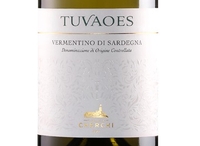 Vermentino can produce wines ranging from innocuous to stunning. Put this one in the stunning category. It combines a lovely saline-like invigorating character with good weight and length. It commands a presence on the table without being heavy or overdone. … Read more
Vermentino can produce wines ranging from innocuous to stunning. Put this one in the stunning category. It combines a lovely saline-like invigorating character with good weight and length. It commands a presence on the table without being heavy or overdone. … Read more
Tenuta Regaleali, Sicilia DOC (Italy) Catarratto “Buonsenso 2020″
($19, Winebow):  Tasca d’Almerita family owns Tenuta Regaleali, a great and reliable name for Sicilian wine. They have transformed Catarratto, another autochthonous grape, into a fleshy and cutting wine. (Soon Catarratto will be called Lucido, after one of its clones, for marketing reasons because the Sicilians believe it is easier for foreigners — mainland Italians included — to pronounce.) … Read more
Tasca d’Almerita family owns Tenuta Regaleali, a great and reliable name for Sicilian wine. They have transformed Catarratto, another autochthonous grape, into a fleshy and cutting wine. (Soon Catarratto will be called Lucido, after one of its clones, for marketing reasons because the Sicilians believe it is easier for foreigners — mainland Italians included — to pronounce.) … Read more
Donnafugata, Passito di Pantelleria DOC (Sicily, Italy) “Ben Ryé” 2018
($35, Folio Fine Wine Partners): 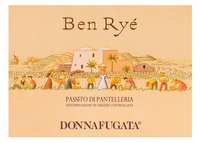 Pantelleria is not an appealing place to make wine. An island off the coast of Sicily closer to Africa than to Rome, it’s been described as “a volcanic rock jutting from the sea” where the major activity is “listening to the wind.” … Read more
Pantelleria is not an appealing place to make wine. An island off the coast of Sicily closer to Africa than to Rome, it’s been described as “a volcanic rock jutting from the sea” where the major activity is “listening to the wind.” … Read more
Planeta, Etna Bianco DOC (Sicily, Italy) 2018
($29, Taub Family Selections):  Planeta is so consistently reliable that consumers can basically pick any of their wines and be thrilled with the choice. Their Etna Bianco, made from Carricante, a grape indigenous to Sicily, is stunning and dispels any notion that Sicily is incapable of making great wine. … Read more
Planeta is so consistently reliable that consumers can basically pick any of their wines and be thrilled with the choice. Their Etna Bianco, made from Carricante, a grape indigenous to Sicily, is stunning and dispels any notion that Sicily is incapable of making great wine. … Read more
Planeta, Cerasuolo di Vittoria DOCG (Sicily, Italy) 2019
($19, Taub Family Selections):  Cerasuolo di Vittoria, Sicily’s only DOCG wine, is a blend of Nero d’Avola and Frapatto, two of Sicily’s autochthonous grapes. Planeta’s is simply marvelous. Refined, it delivers a balanced combination of minerals and cherry-like fruit. Weighing in at a modest 13 percent stated alcohol, it is not particularly opulent, but it is particularly penetrating. … Read more
Cerasuolo di Vittoria, Sicily’s only DOCG wine, is a blend of Nero d’Avola and Frapatto, two of Sicily’s autochthonous grapes. Planeta’s is simply marvelous. Refined, it delivers a balanced combination of minerals and cherry-like fruit. Weighing in at a modest 13 percent stated alcohol, it is not particularly opulent, but it is particularly penetrating. … Read more
Vivera, Nero d’Avola DOP (Sicily, Italy) 2020
($23, Montcalm Wine Importers):  I was unfamiliar with this producer until samples arrived on my doorstep. Now, with this Nero d’Avola and their equally impressive Etna Rosso, Vivera is a name I will remember. The fleshy character of this Nero d’Avola presents a great counterpoint to the sleek austerity of their 2019 Etna Rosso. … Read more
I was unfamiliar with this producer until samples arrived on my doorstep. Now, with this Nero d’Avola and their equally impressive Etna Rosso, Vivera is a name I will remember. The fleshy character of this Nero d’Avola presents a great counterpoint to the sleek austerity of their 2019 Etna Rosso. … Read more
Pasqua Vigneti e Cantine, Amarone della Valpolicella DOCG (Veneto, Italy) “Famiglia Pasqua” 2016
($45): 
Pasqua Vigneti e Cantine, Amarone della Valpolicella DOCG (Veneto, Italy) “Mai Dire Mai” 2012
($105): 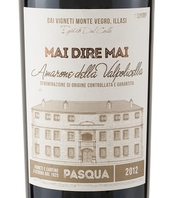
Tenuta Carretta, Roero Riserva DOCG (Piedmont, Italy) “Bric Paradiso” 2016
($35):  The red wines from the Roero DOC, just across the river from Barolo and Barbaresco are under-rated and fly under the radar as Michael Franz, my friend and colleague at WineReviewOnline.com, has pointed out. Juicy and succulent, this youthful example shows just how impressive the wines from this DOC can be. … Read more
The red wines from the Roero DOC, just across the river from Barolo and Barbaresco are under-rated and fly under the radar as Michael Franz, my friend and colleague at WineReviewOnline.com, has pointed out. Juicy and succulent, this youthful example shows just how impressive the wines from this DOC can be. … Read more
Tenuta Carretta, Barbaresco Riserva DOCG (Piedmont, Italy) “Cascina Bordino” 2015
($55, Consortium Wine and Spirits Imports):  With prices of Barolo and Barbaresco going higher and higher, this wine should be on every Piedmont-lovers list. Its relative bargain status — I hate to call a $55 wine a bargain, but it is — could be due to the 2015 vintage, an excellent year overshadowed by the hype justifiably afforded the 2016s. … Read more
With prices of Barolo and Barbaresco going higher and higher, this wine should be on every Piedmont-lovers list. Its relative bargain status — I hate to call a $55 wine a bargain, but it is — could be due to the 2015 vintage, an excellent year overshadowed by the hype justifiably afforded the 2016s. … Read more
Vivera, Nero d’Avola DOP (Sicily, Italy) 2020
($23, Montcalm Wine Importers):  I was unfamiliar with this producer until samples arrived on my doorstep. Now, with this Nero d’Avola and their equally impressive Etna Rosso, Vivera is a name I will remember. The fleshy character of this Nero d’Avola presents a great counterpoint to the sleek austerity of their 2019 Etna Rosso. … Read more
I was unfamiliar with this producer until samples arrived on my doorstep. Now, with this Nero d’Avola and their equally impressive Etna Rosso, Vivera is a name I will remember. The fleshy character of this Nero d’Avola presents a great counterpoint to the sleek austerity of their 2019 Etna Rosso. … Read more
Vivera, Etna Rosso DOC (Sicily, Italy) 2019
($34, Montcalm Wine Importers): 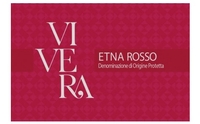 Wines made from grape grown on the lava-rich slopes of Sicily’s Mount Etna transmit their origins beautifully and precisely. The cherry-like fruitiness of this Etna Rosso takes a back seat to its angular lava-tinged character. Wonderfully austere, this sleek wine delivers a saline-like freshness. … Read more
Wines made from grape grown on the lava-rich slopes of Sicily’s Mount Etna transmit their origins beautifully and precisely. The cherry-like fruitiness of this Etna Rosso takes a back seat to its angular lava-tinged character. Wonderfully austere, this sleek wine delivers a saline-like freshness. … Read more
Canavere di Giacosa Fratelli, Barbera d’Alba DOC (Piedmont, Italy) Bussia 2019
($24, Montcalm Wine Importers): 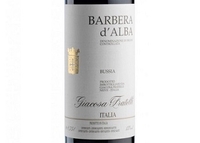 The versatility of Barbera helps explain its popularity. Typically bright and fresh, like this one, they are a “go-to” choice for many tomato-based pasta dishes. This one’s raspberry-like fruitiness and mild tannins means that it could take a chill nicely in the waning days of summer. … Read more
The versatility of Barbera helps explain its popularity. Typically bright and fresh, like this one, they are a “go-to” choice for many tomato-based pasta dishes. This one’s raspberry-like fruitiness and mild tannins means that it could take a chill nicely in the waning days of summer. … Read more
